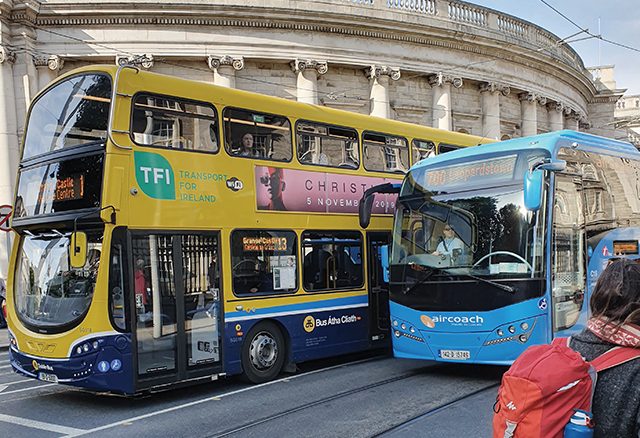
[dropcap]C[/dropcap]hanges to the Bus Connects scheme will not impact on the “integrity” of the plan, despite more routes going through Dublin city according to the National Transport Authority (NTA).
According to statement released by the NTA “the redesign of the network was a key measure of the Transport Strategy for the Greater Dublin Area 2016-2035.”
The idea is to provide a more coherently planned, higher capacity, more understandable network, delivering a better overall bus system for the Dublin region.
The redesign came after the NTA recieved an unprecedented number of complaints through a public consultation following the initial announcement of the scheme in July 2018.
The biggest single complaint from people related to the loss of existing services. A further 26 percent of complaints expressed concern about having to make an interchange to complete a journey.
Almost a third of people were worried about the Bus Connects plan not providing them with sufficient access to schools, colleges and hospitals.
The NTA said it is confident it has addressed the concerns of “all but a small minority” of those who responded.
The Bus Connects system is built around the concept of prioritising key ‘spines’ that run towards the city and a system of orbital routes that connect them.
Spines are very frequent routes made up of individual bus services timetabled to work together along a corridor.
There had been seven spines under the plans announced last year but an eighth has now been added.
The new ‘H’ spine will run from the city centre along the Howth Road towards Howth and Malahide
The plan also includes 10 orbital routes which are designed to significantly reduce the need for passengers to travel into the city centre.
Orbital services will also operate around the city, providing connections between suburbs and town centres, along with connections to rail, Luas and other bus routes.
According to the NTA the new plan will see bus services increased by 22% meaning almost one million people will be within 400m of a bus service operating every 15 minutes or better, an increase of about 30 per cent on current numbers.
They also stated that 650,000 people will be within 400m of a service operating every 10 minutes or better, an increase of 35 per cent.
The proposed network was due in place at the end of this year however the NTA have now said that it will be implemented between 2021 and 2023, to ensure “a manageable level of change for customers and bus operators”.
Aoife O’Brien
Image Credit: Aoife O’Brien



